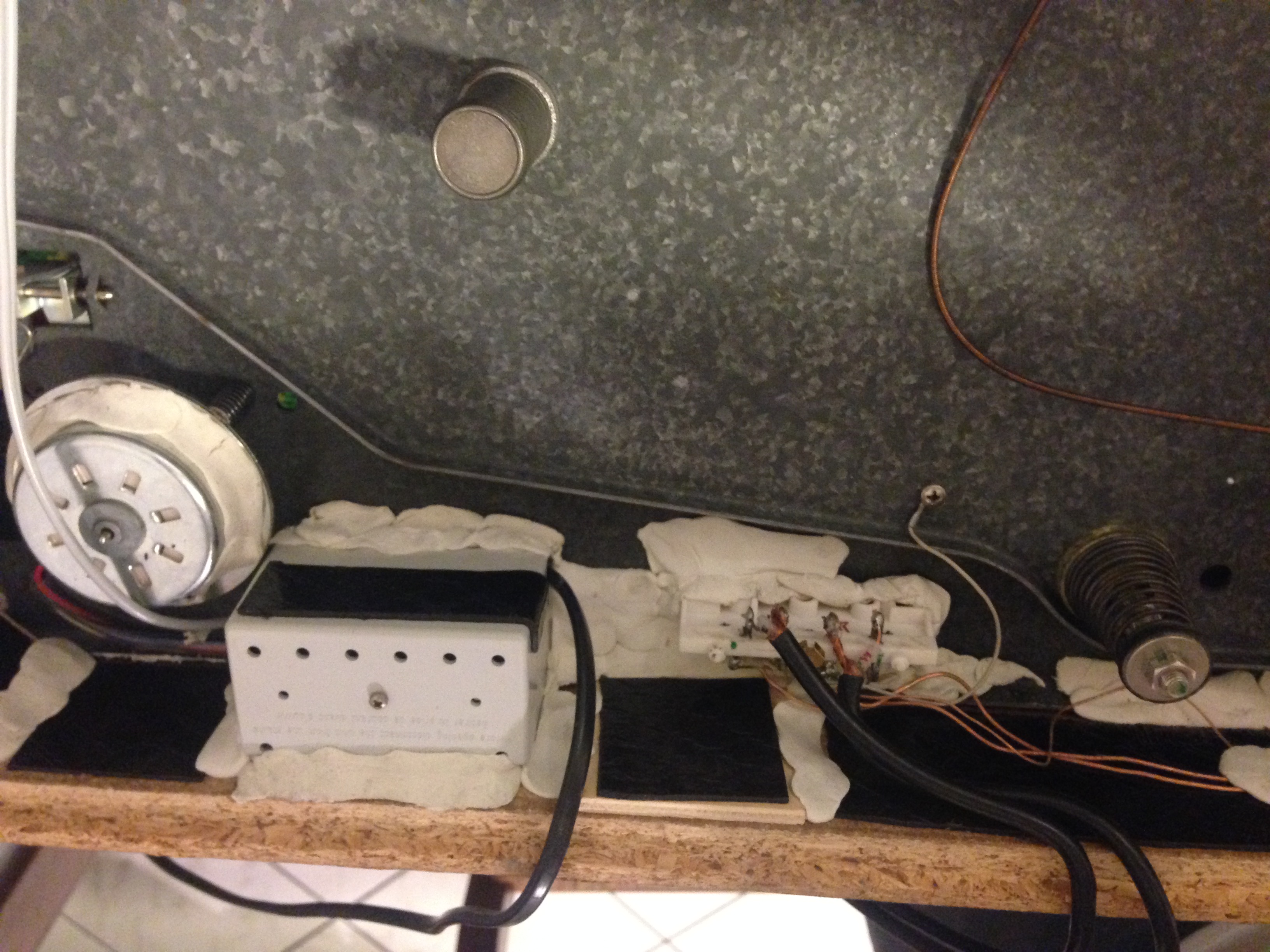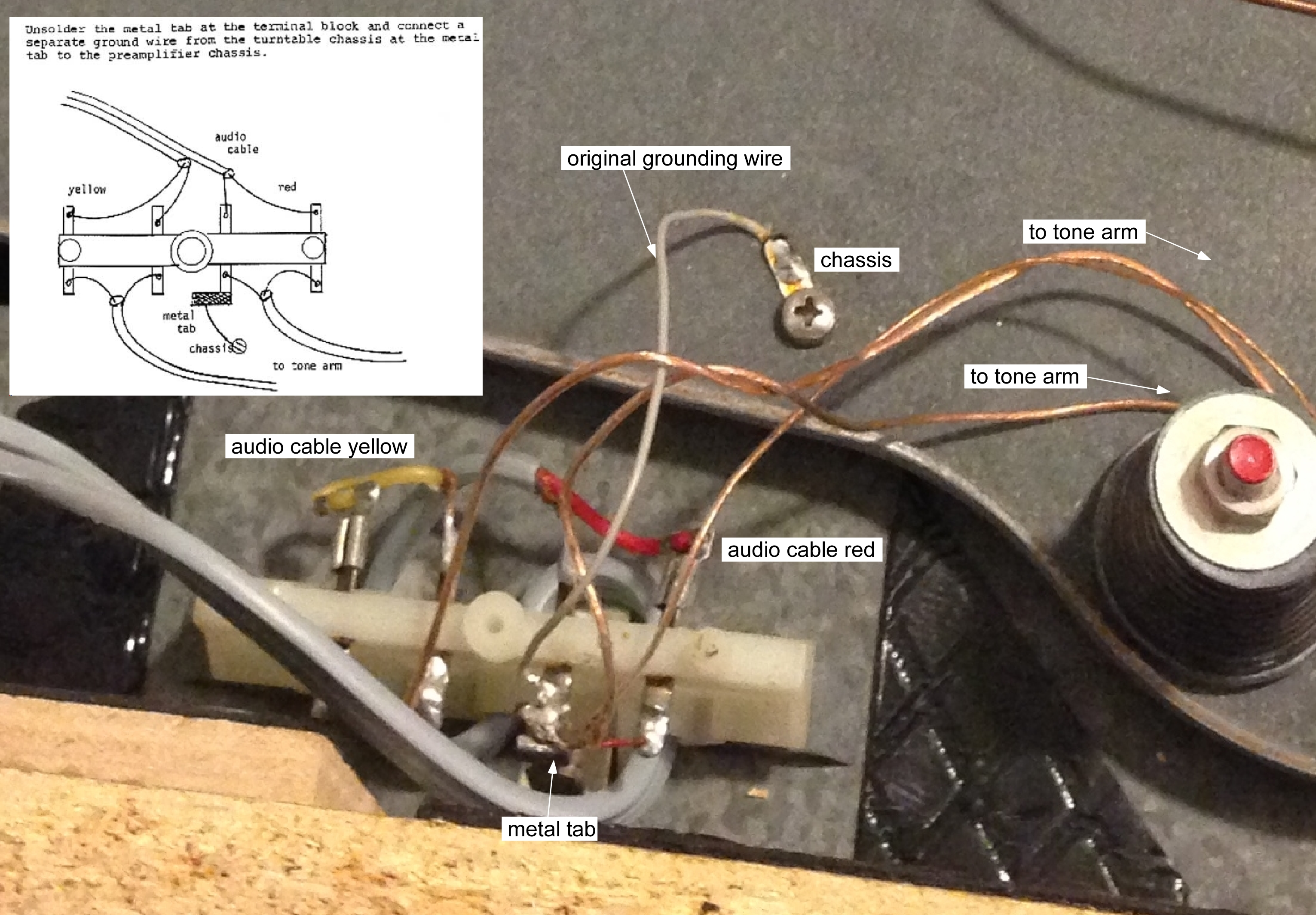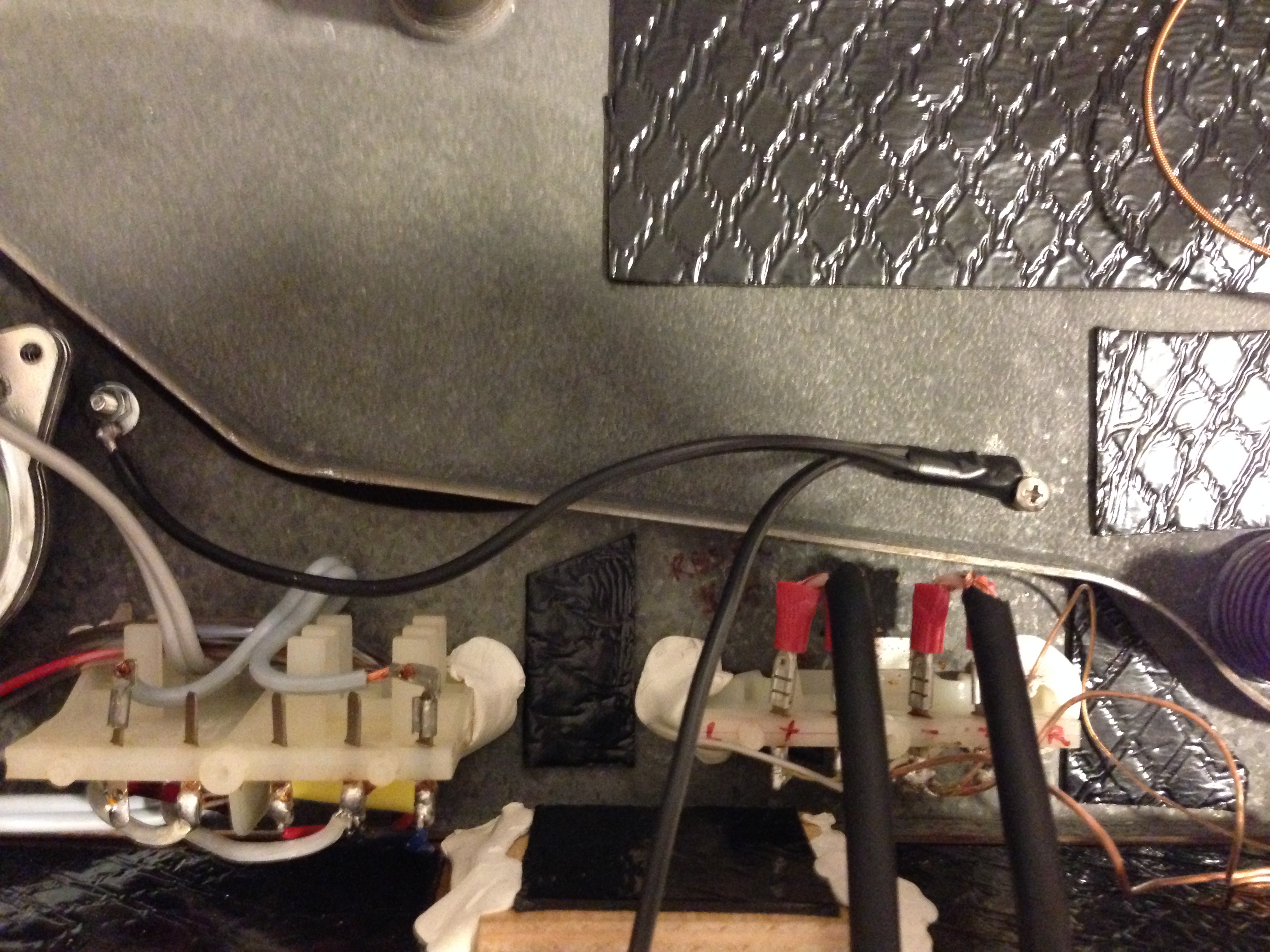Cables installed on Thorens turntables in the 70s were not high-quality. But authoritative experts advise original cables in good state should be left in their place. Thorens designed them carefully balanced for use with their turntables so if they work you don’t need to replace them. A good idea is replacing the old RCA connectors with modern gold-plated ones. I have usually replaced the signal cables of my Thorens and the following may be helpful to those who should or want to do so.
One of the first thing I did on my first Thorens, a TD-165, was getting rid of phono cables and mains lead. For replacing the latter I could be satisfied with a general purpose modern mains cable with standard plug. Then, following the advice of an electrical technician friend, I bought some gold-plated RCA connectors to use with a good microphone coaxial cable; coaxial cables typically offer low capacitance and good shielding for phono applications.
 A coaxial cable is essentially a central conductor wire wrapped in a plastic sheath, wrapped in turn in a shielding made of a braided metal net that runs along the whole cable. The braided shield is to be connected to the negative (cold) lead, the central conductor to the positive (hot) lead.
A coaxial cable is essentially a central conductor wire wrapped in a plastic sheath, wrapped in turn in a shielding made of a braided metal net that runs along the whole cable. The braided shield is to be connected to the negative (cold) lead, the central conductor to the positive (hot) lead.
This may be it for all HiFi purposes, since we’re talking about unbalanced connections (not balanced connection use in professional audio). The braided shield in unbalanced cables provides isolation against external interference; the low capacitance makes for a better high-frequency roll-off, hence a flatter frequency response. The capacitance of cables affects the final audio result more on turntables than in other audio applications: capacitance is a function of impedance, therefore of length, so it is better to keep cable length around one meter or so.
Later I discovered that the best non-professional audio cables were those designed for video: they are coaxial (the best geometry for unbalanced phono cables), they are well shielded and feature a relatively low capacitance since they are designed to have a standard impedance of 75 ohm (resulting in 16-21 pF/ft). The best among video cables seem to be those with double braided metal shield and a rather flexible sheathing. As phono cables for my “new” Thorens TD-160 I was able to find the Belden 1505F, recommended by Blue Jeans Cable for general analog audio purposes. As RCA connectors I picked up some excellent Monster Cable plugs. Although the Belden are certainly very good coaxial cables, maybe only bettered by the Blue Jeans LC-1 cables they inspired, I later decided to use thinner cables: they are easier to manage and install within Thorens plinths; they are more flexible and handle better when folded for transport. I found out some turntable cables intended for Technics SL-1200 decks but easily installed on Thorens tables.
The grounding cable for a turntable is a completely different matter. To begin with, it is better to clarify that we’re talking about signal ground, not mains ground (which is disconnected on Thorens tables). Many Thorens models are sold with no grounding cable to be connected to the pre’s or phono amp’s chassis (or to the appropriate connector when available). TD-165s and 160s all come with a simple ground wiring: a wire connects a metal tab soldered to the negative right channel tonearm terminal to the floating subchassis (picture below). With this wiring, which I never bothered of before, I’ve never had any hum problems with my Thorens TD-165: although I’m running a Grado cartridge, I experienced no Grado hum at all… But as soon as I hooked my current TD-160, I was startled to hear a low hum as background noise. Usually, stock Thorens RCA plugs deteriorate with time, so does the provided ground connection.
 Replacing the stock RCA plugs with good modern ones is enough to go back to an efficient grounding and eliminate noise. But I did not replace the plugs immediately on my TD160 so, browsing through the many forum threads on the topic, I decided to try the same rewiring that, if I’m not wrong, the Thorens service manual suggests (see picture below):
Replacing the stock RCA plugs with good modern ones is enough to go back to an efficient grounding and eliminate noise. But I did not replace the plugs immediately on my TD160 so, browsing through the many forum threads on the topic, I decided to try the same rewiring that, if I’m not wrong, the Thorens service manual suggests (see picture below):
– I disconnected the cable from the subchassis but left it soldered to the right channel negative terminal metal tab; I simply isolated the lead in the “white tac” I’m using as internal dampening;
– I connected a simple copper wire from the same subchassis connection to a hole in the top plate that you can find near the motor in any Thorens TD-16x;
– a suitably long copper wire is also to be connected to the subchassis contact: it will function as grounding wire to the preamplifier.
 Now even my Thorens TD-160 has become “hum-free”.
Now even my Thorens TD-160 has become “hum-free”.
In summary, it should probably suffice to replace the old RCA connectors, that’s usually where the hum problem is. This is a system that replaces that of the initial design of providing the ground on the right channel with the negative of the RCA. If we install new cables, not much changes. If we use already assembled cables with ground wire like the ones for Technics mentioned above, we might as well make this modification instead of leaving it hanging…
Low capacitance cables from Blue Jeans Cable
Unbalanced vs. balanced cables on bluejeanscable.com